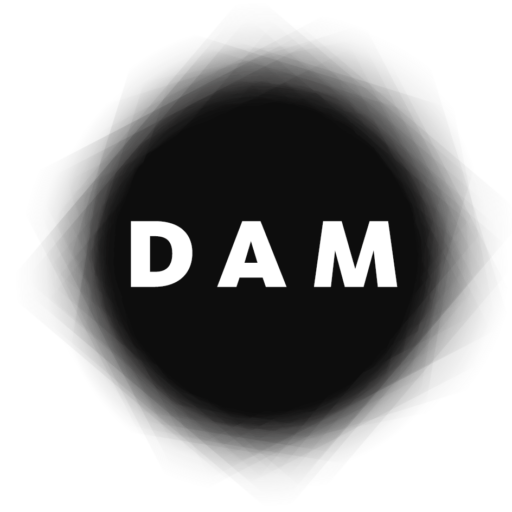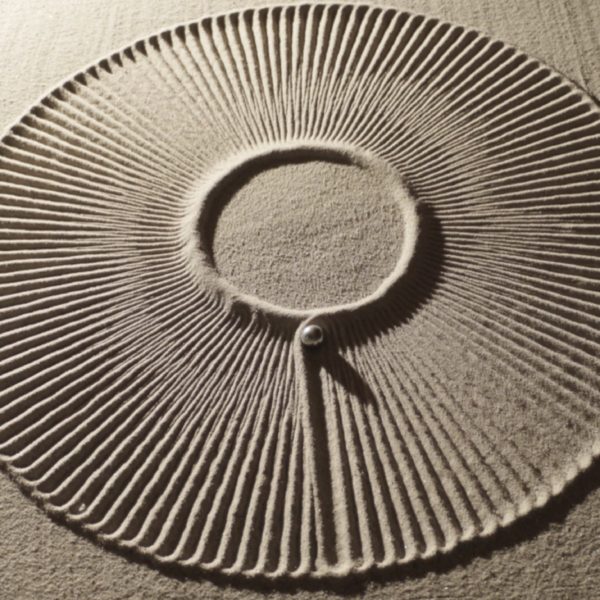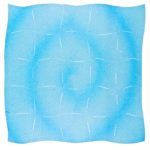
Jean-Pierre Hébert was an early practitioner of algorithmic art who created his first drawings in 1977 and expanded his practice from plotter drawings to ephemeral, computer-driven installations with sand, water, and wind. In 1995, he co-founded with Roman Verostko the artists group The Algorists. Artist in residence at the Kavli Institute for Theoretical Physics at the University of California Santa Barbara, he had a long lasting collaboration with the institution until his passing in 2021.
Website of Jean-Pierre Hébert:
www.jeanpierrehebert.com
Drawings from the 2000s
Hébert starts in this phase the development on new line forms, the grid and the filament, to which he applies chance behaviors. He continues to work with sand, in collaboration with David Bothman and Victor Dinovi, and visual music, collaborating with Iannis Zannos. He also creates new etchings in collaboration with Elaine Levasseur and others. During a residency, he gains access to a 24″ wide inkjet printer, as well as improved access to hardware and software, which allow him to create drawings in different sizes, at a very high resolution. His influences in this period range from François Morellet to John Cage and Channa Horwitz.
Sand Installation 1997-2020
In 1997, Hébert conceived the unique and original idea of adapting his very personal algorithmic process to draw in sand. He was inspired by Japanese Zen gardens and by a book by David Bourdon. He has since built several sand installations, in collaboration with David Bothman. “Ulysses” was exhibited at Siggraph in 1999, and in 2005 with an interactive audio (in collaboration with Iannis Zannos).
Drawings from the 1990s
In this phase Hébert experiences an increased understanding of the medium, with better knowledge of the software and tools, that allow him to create his own personal libraries and further experiment creating algorithmic drawings. He mainly produces graphite on paper with pencil lead plotter drawings, but also carries out his first attempts at digital prints and etchings. He also collaborates with fellow artist Roman Verostko on the virtual plotter series and creates installations with sand. His main influences in this work are Max Bill, Hokusai, buddhist art, and zen art.
Drawings from the 1980s
This phase is characterized by Hebert’s full time dedication to drawing with software since 1984. He initially worked with improved small computers and plotters, then in the late eighties had access to a large plotter, UNIX workstations, and better programming languages. With these resources, he created his first large pieces, most of which are ink on paper. According to the artist, at this time his personal style is emerging, “combining fluidity, complexity, lightness and clarity.” The artworks denote influences early chinese paintings and calligraphy, chinese lattices, and islamic tilings, as well as the writings of Benoit Mandelbrot and the book Tilings and Patterns by Branko Grünbaum and Geoffrey Colin Shephard.
The Virtual Plotter
Artworks created with a software that emulates in a digital way the capabilities, style and idiosyncracies of the plotter.
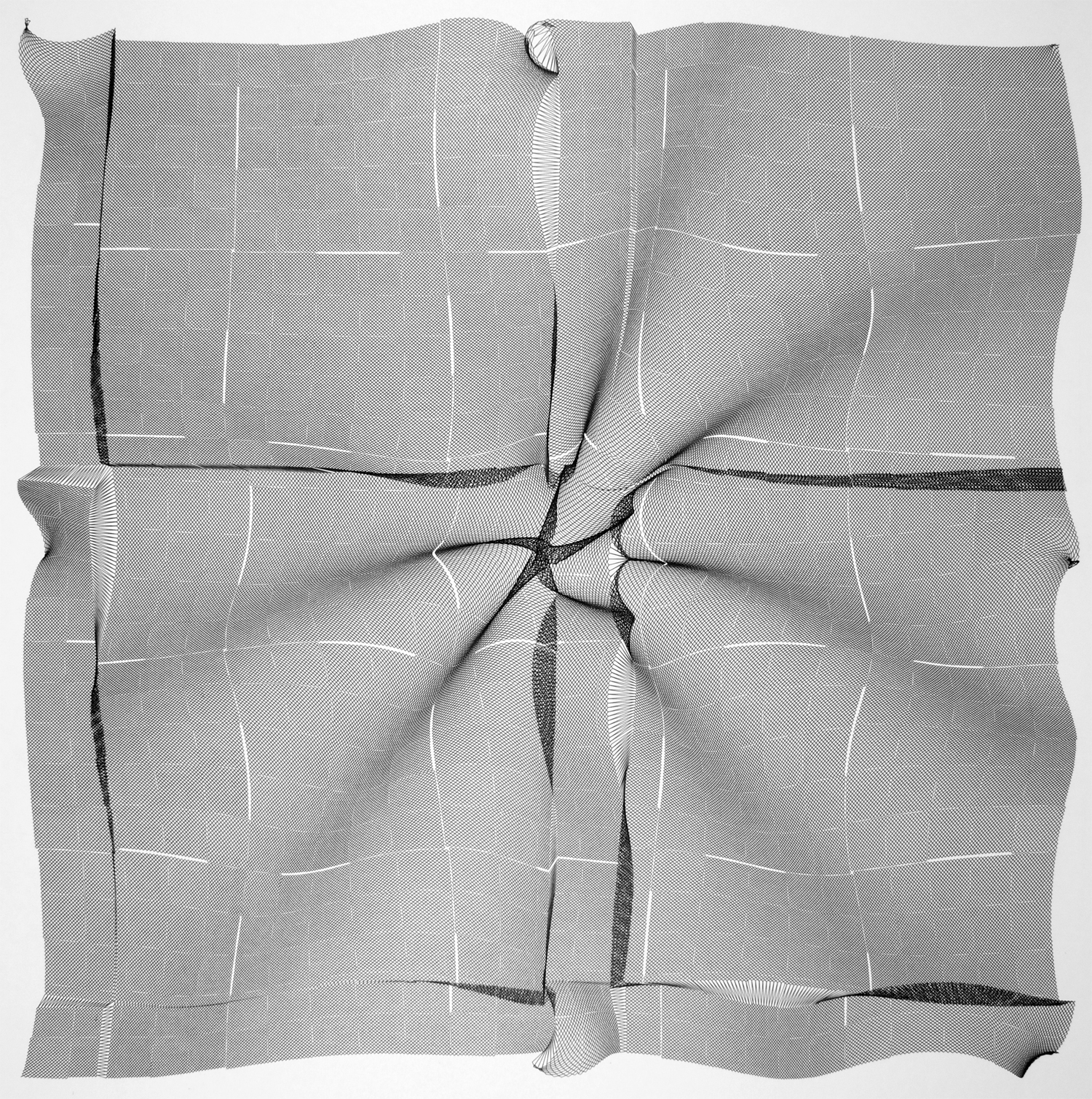
Le dessin est beau si la ligne est vivante.
–Jean Cocteau
I imagine conceptual drawings, and then I rely on software and devices to produce the pieces, instead of drawing them in the traditional sense, that is by hand. So cultivating a diversity of drawing families, I have been able to pioneer and develop a unique style of art at the margin of science, physics, mathematics, geometry, poetry. Blending all these disciplines, each work is a visual poem, a metaphor for them all together.
So my process is to compose, to choreograph a continuum of drawing and painting using algorithms that I code to serve my purpose. My work is freed from the physical constraints usual to drawing, so that I experience no limit in size or complexity, no muscle cramps, no fatigue, no visual strain; I can draw hair thin lines of extraordinary length, include them in networks, or model them in any shape and size I want; I can subject them to forces, fields, transformations; I can move beyond two dimensions to higher forms of space, and allow chance, time, sound, and all levels of additional information to be part of the work.
I enjoy this freedom immensely, and I present some examples dating from the mid seventies to date.
Jean-Pierre Hébert, Santa Barbara, March 19, 2016
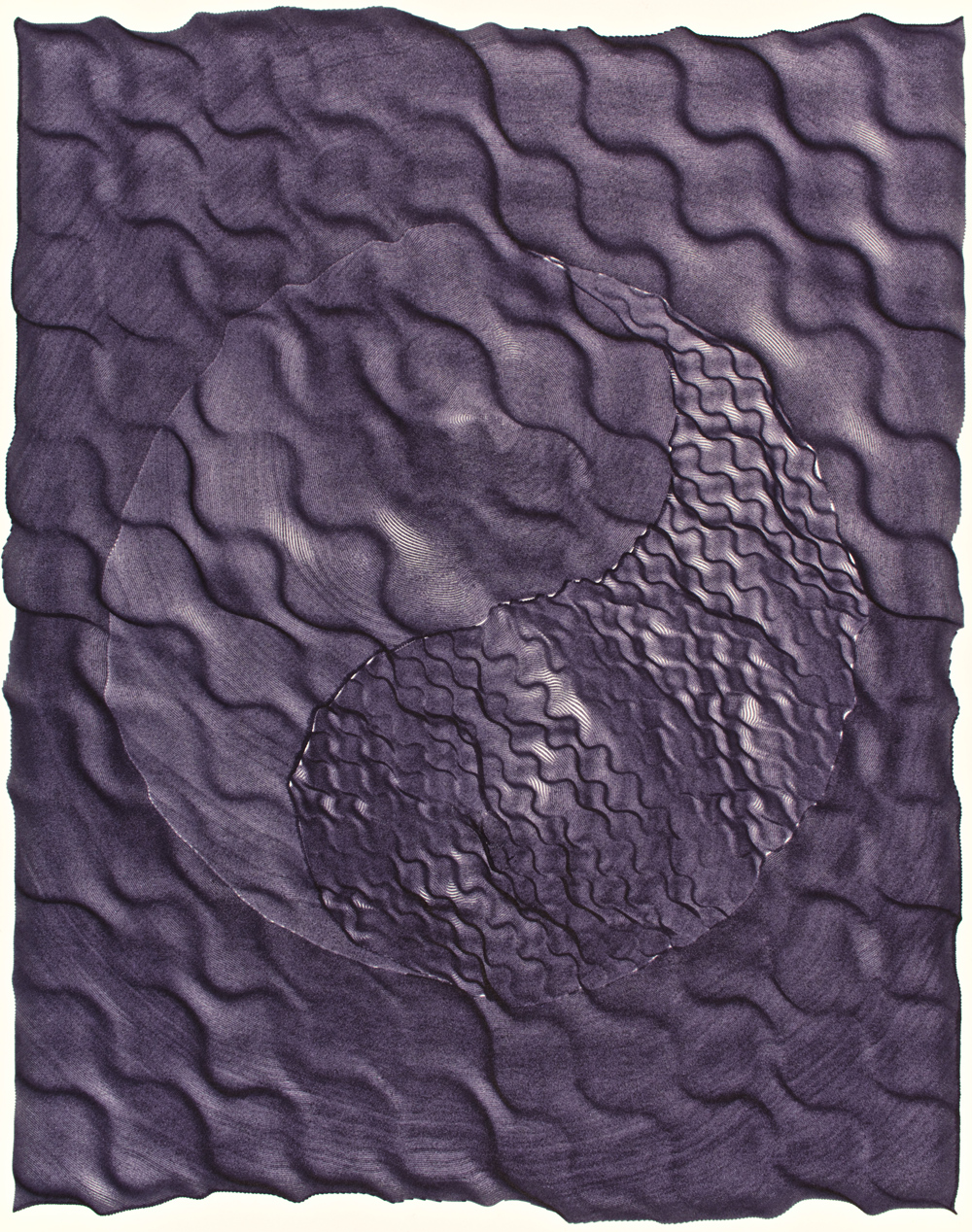
Calais (France), 1939 – Santa Barbara, CA (USA), 2021
Jean-Pierre Hébert was interested in art at a young age, frequenting the Galerie Alphonse Chave in Vence, where he saw the work of Matisse, Man Ray, Max Ernst, Chagall, Picasso, Cocteau, and Léger, who lived nearby. In 1959, while still a student, he started programming in FORTRAN during a summer job at IBM, using the first commercial computer available in Europe. Reading about the work of Anni Albers in an IBM brochure inspired him to use computer algorithms to create works of art. In 1974, while working as a consultant at the first Hewlett-Packard lab in Paris, he started creating conceptual algorithmic art and in 1977 he bought his first plotter, with which he produced his first series of small ink on paper artworks. In 1985, he moved to Santa Barbara, California, and soon after discovered an entire community of like-minded artists at the SIGGRAPH ’89 Art Show, where he would regularly take part in the following years. That same year, he had his first solo show at Galerie Alphonse Chave, where he presented a selection of algorithmic drawings. In 1995, after participating in a panel titled “Art and Algorithms” at SIGGRAPH, he co-founded the artists group the Algorists with Roman Verostko, which includes the algorithmic art pioneers Harold Cohen, Herbert W. Franke, Manfred Mohr, Vera Molnar, Frieder Nake, and Georg Nees, as well as the computer scientist and fractal image artist Forest Kenton Musgrave. Hébert coined the term “algorist”, which refers to “artists who create art using algorithmic procedures that include their own algorithms,” and wrote the following algorithm as a manifesto:
if (creation && object of art && algorithm && one’s own algorithm) {
include * an algorist *
} elseif (!creation || !object of art || !algorithm || !one’s own algorithm) {
exclude * not an algorist *
}
The definition clearly shows that an algorist must use his or her own algorithm, so as to differentiate between the artists who write their own code and those who use existing software. In 1997, Hébert had the original idea of adapting his very personal algorithmic process to draw in sand. His interest in this material and the process of ephemeral creation was inspired by Japanese Zen gardens and by David Bourdon’s book Designing the Earth – The Human Impulse to Shape Nature (Harry N. Abrams, 1995). He built several sand installations over the years, in collaboration with David Bothman. Among these were Ulysses, exhibited at Siggraph in 1999, and in 2005 with an interactive audio (in collaboration with Iannis Zannos), and Sisyphus I (1997-98), a piece made of a sandbox in which a steel ball controlled by a concealed magnet draws patterns following a pre-defined algorithm. In 2003, Hébert became artist in residence at the Kavli Institute for Theoretical Physics at the University of California, Santa Barbara. He continued his work at UC Santa Barbara, which now holds many of his artworks at the Kohn Hall and the Munger Physics Residence. Jean-Pierre Hébert passed away on Sunday March 28, 2021.
His work has been presented in solo and group shows nationally and internationally including at the Victoria and Albert Museum (London, UK), the Brooklyn Museum (New York), the Kiasma Museum (Helsinki, Finland), the Block Museum (Chicago), and the Tweed Museum (Duluth, Minnesota). Recent shows include Coder le Monde (Centre Pompidou, Paris, 2018), The Algorists (Thoma Art Foundation, Chicago, 2018), Drawn from a Score (Beall Center for Art+Technology, Irvine, 2018), and Jean-Pierre Hébert: Quantum Metaphors (Art|Sci Gallery, UCLA, Los Angeles, 2016), among others. Hébert was awarded grants from Fondation de France/Fondation La Ferthé (2000), New York Artists’ Fellowship (2005), Pollock Krasner Foundation (2006), and David Bermant Foundation (2008). In 2012, he received the ACM SIGGRAPH Distinguished Artist Award for Lifetime Achievement in Digital Art.
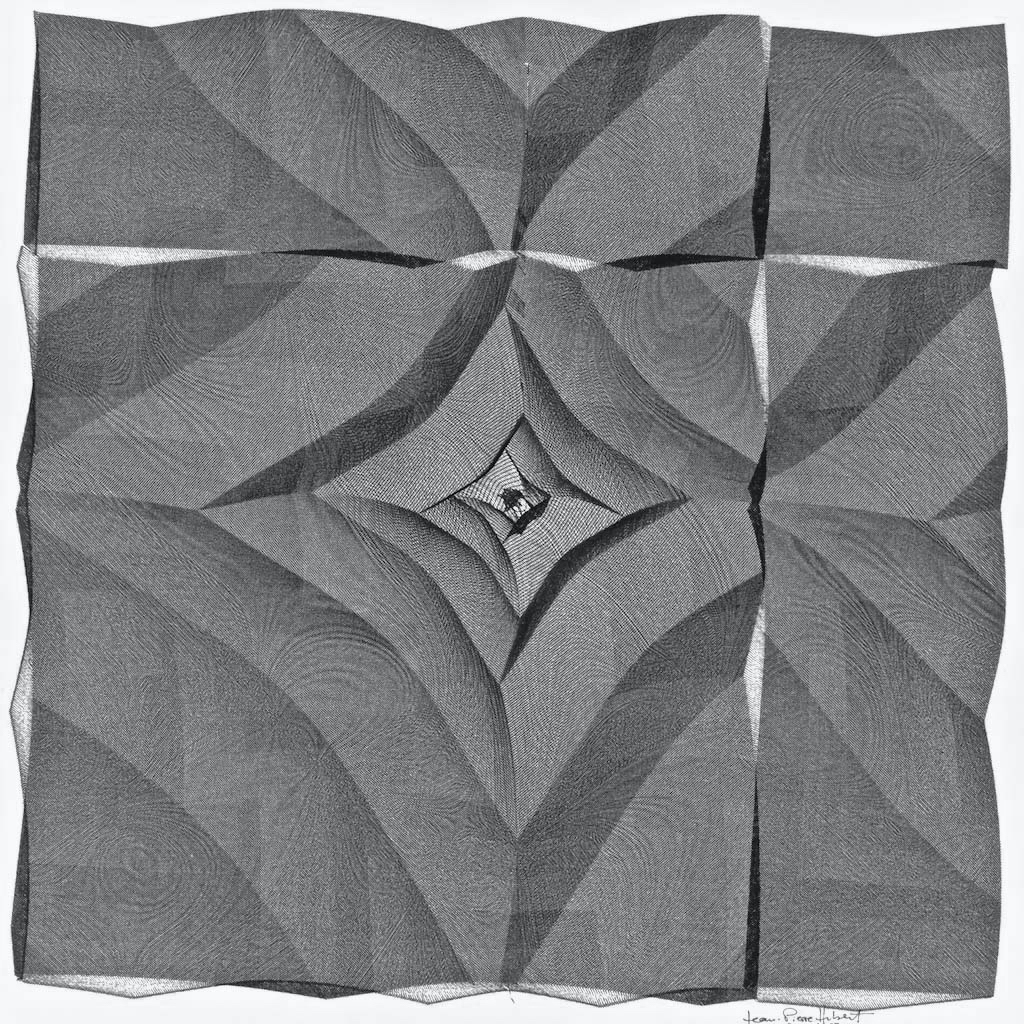
Hébert, J-P. (2011). Artist’s statement. Jean-Pierre Hébert. [EN]
–– (2013). Drawing, Nature, and Ephemerality. Jean-Pierre Hébert. [EN]
–– (2014). Drawing is just a thought. Artist’s statement. Jean-Pierre Hébert. [EN]
Cressey, D. (2009). Q&A: The Algorist. Nature, Vol. 462, No. 12, November 2009 [EN]
Verostko, R. (2003). The Drawings of Jean-Pierre Hébert – Master Algorist. THE ALGORISTS. [EN]
–– (2014). The Algorists. THE ALGORISTS. [EN]
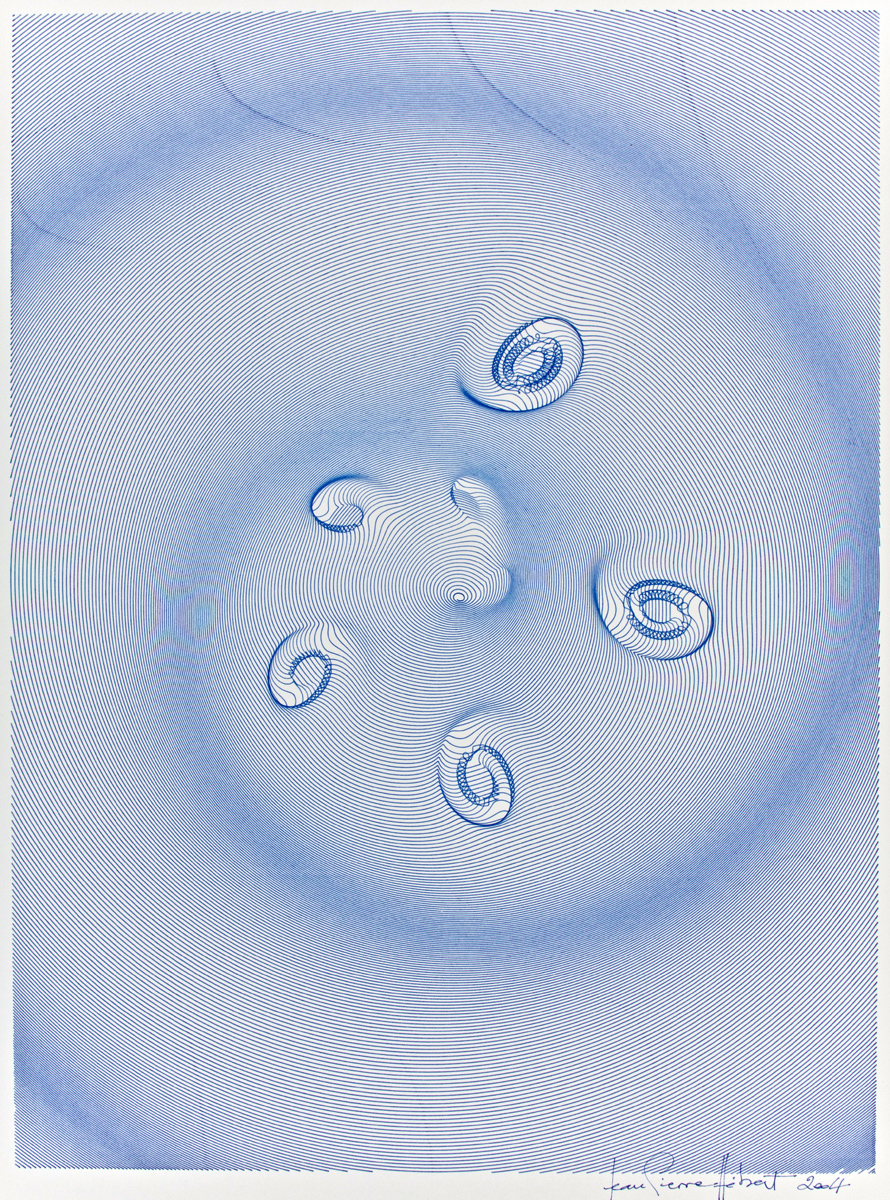
2000
– Korean Broadcast Systems “Munhwa Kihaing” (Cultural Agenda, February 1st 2000 program)
1999
– Review in Tricycle: The Buddhist Magazine (On-line Decembre 1999).
– “ArtByte” (December 1998 & February 1999).
– Review in “The Computer in the Visual Arts”, by Ann Morgan Spalter (Addison Wesley 1999).
– Review in “Art on Paper” (March 1999).
– Front Cover & Article “Ulysses: Sand as Medium”, The Mathematica Journal (Volume VII Issue 3, 1999).
1992
– Siggraph Visual Proceedings (Catalogs and CDROMs 1992, 1994, 1995, 1996, 1997, 1998, 1999).
1991
– Computer Graphics World (July Issue 1991).
– “Computers in Art and Design”, Isaac V. Kerlow (Siggraph’91).
1990
– Front Cover & Article, The Mathematica Journal (Volume I Issue 2, 1990).
– Leonardo (Supplemental Issue 1990).
– The Journal of the ACM (December Issue 1990).
1989
– Leonardo (Journal of the International Society for the Arts, Science, and Technology, Supplemental Issue 1989).
– SunTech Journal (Fall Issue 1989).
